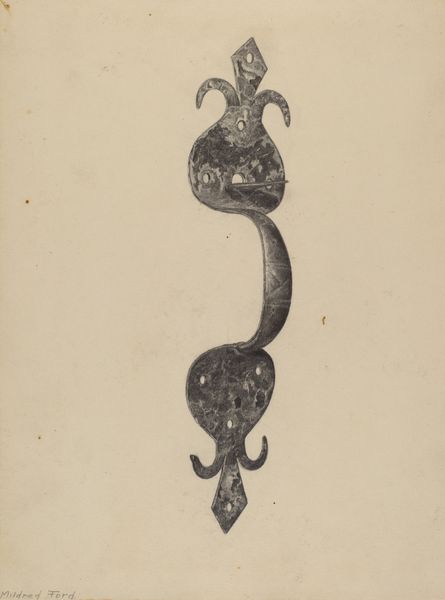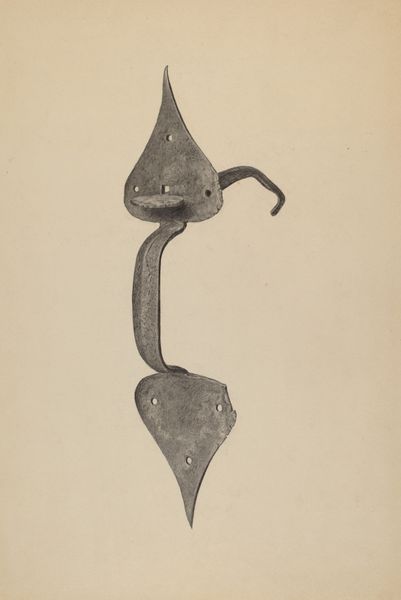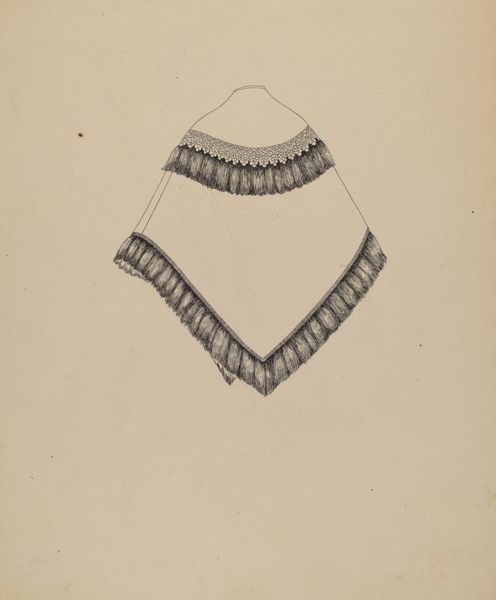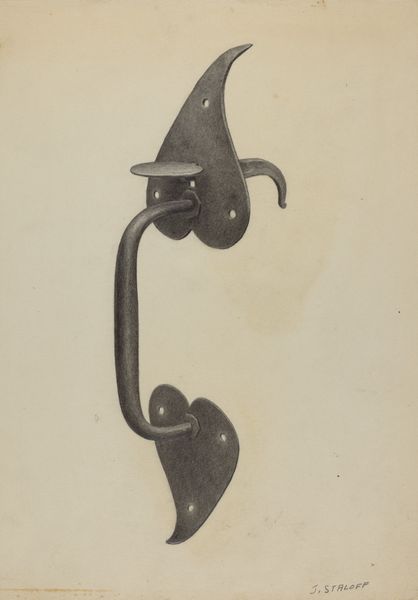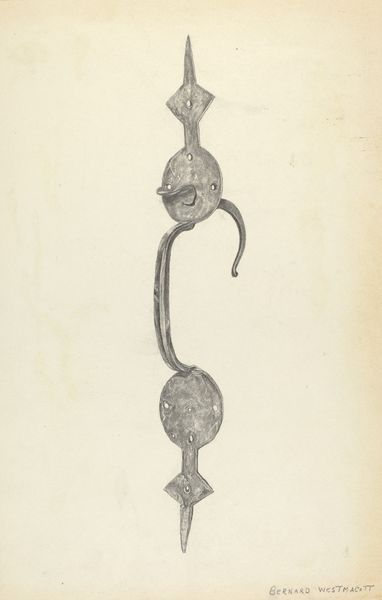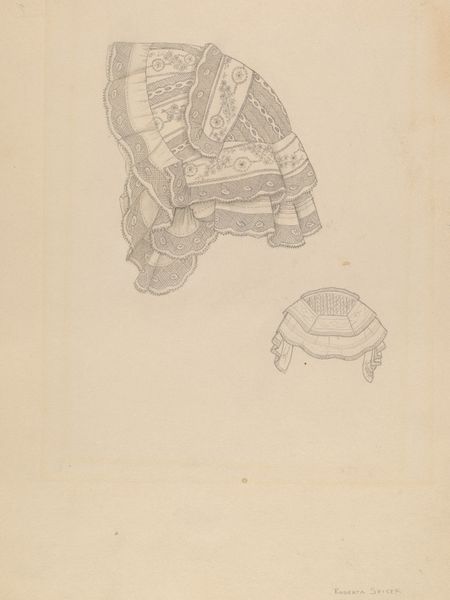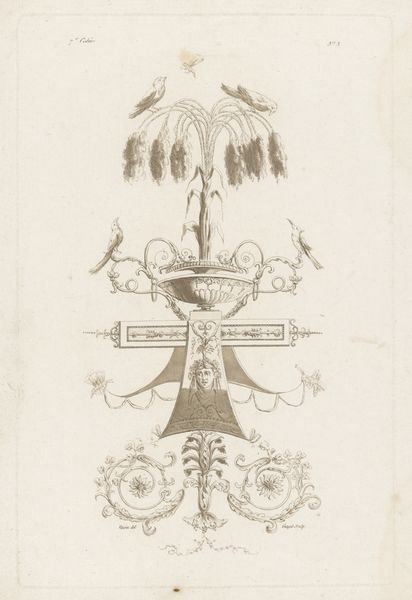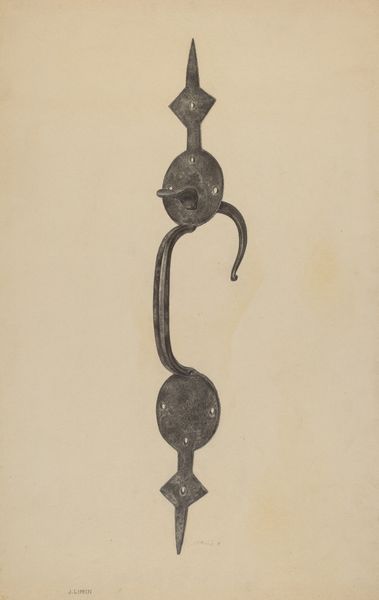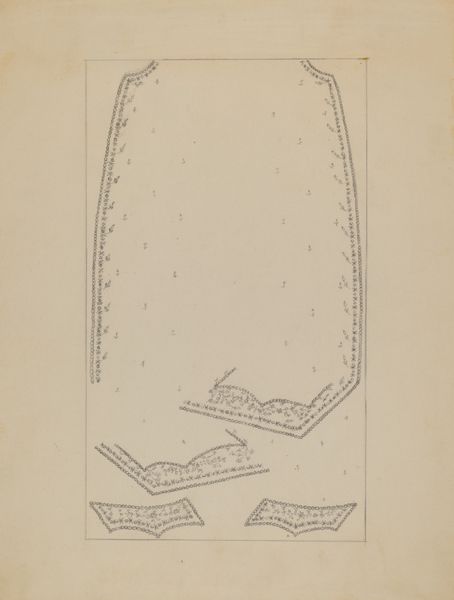
drawing, paper
#
drawing
#
paper
#
geometric
Dimensions: overall: 34.9 x 22.8 cm (13 3/4 x 9 in.)
Copyright: National Gallery of Art: CC0 1.0
Curator: Let's explore this intriguing sketch titled "Grey Stoneware Water Jug." The anonymous artist created this drawing on paper sometime between 1935 and 1942. Editor: It's like a ghost of a water jug, very ethereal! The grey pencil work, even in this simple line drawing, creates such a solemn, contemplative mood. Curator: Notice how the geometric form of the jug itself is contrasted by the almost jewelry-like decorative pattern adorning its center. This blending of functional object with almost precious, symbolic motifs speaks to a specific tradition. Stoneware, even when utilitarian, often became a canvas for encoded meanings. Editor: Precisely! This vessel transcends its apparent functionality. Think about water, and its historical significance beyond mere hydration—rituals of cleansing, of communal sharing...I am intrigued to see the necklace on the body of the jar. A bit sexually provocative to be sure, and could refer to ideas around female representation during that period. It begs the question of what cultural codes and narratives the jug carried at the time of its creation, and whether or not women were permitted full participation in society during the creation of the vessel. Curator: Indeed! These shapes--these vessels, hold histories. They are imprinted with cultural beliefs and symbolic languages. Think of ancient amphorae: the forms we've reproduced for millennia are containers of meaning that shape our memories. Editor: Even the "greyness" of the drawing, I find, adds layers. Grey suggests a neutrality, maybe an uncertainty. It captures the in-between spaces—between eras, identities, truths...a poignant choice during such turbulent times pre- and during World War II. The simple pencil medium renders a softness in contrast to potential conflict in that moment of creation. Curator: Ultimately, this anonymous piece asks us to consider how even the simplest form, the humblest material, can speak volumes. Editor: Absolutely. And in its quiet, subtle way, it whispers uncomfortable questions about women in pre-war societies into our ears still.
Comments
No comments
Be the first to comment and join the conversation on the ultimate creative platform.
